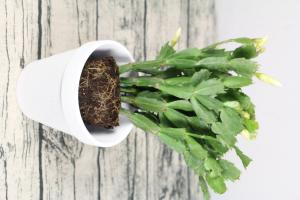What Do Roma Tomato Plants Look Like?
Roma tomatoes are popular among gardeners due to their delicious taste and versatility in the kitchen. These tomatoes are perfect for canning, making sauces, and using in salads. If you're interested in growing these juicy tomatoes in your garden, it's important to know what roma tomato plants look like.
Plant Description
Roma tomato plants are determinate, which means they grow to a certain height and stop growing once the fruit has set. These plants typically grow to be about 3-4 feet tall and have a spread of 2-3 feet. The stems and leaves of the plant are a bright green color and have a slightly fuzzy texture.
Flower and Fruit Formation
Roma tomato plants produce small yellow flowers that are about 1 inch in diameter. These flowers are the precursor to the roma tomato fruit. Once the flowers have bloomed, the fruit will start to grow. Roma tomatoes are small, oblong-shaped tomatoes that are about 2-3 inches long. The fruit is a bright red color and has a meaty texture with fewer seeds than other tomato varieties.
Soil and Water Requirements
Roma tomato plants require well-draining soil that is rich in organic matter. It's important to ensure that the soil is moist but not waterlogged. Overwatering can lead to root rot and other fungal diseases. It's recommended to water the plants deeply once a week, rather than shallow watering several times a week.
Light Requirements
Roma tomato plants require full sun, which means at least 6 hours of sunlight per day. These plants do not grow well in shade or partial sun, so it's important to plant them in an area that receives full sunlight.
Support Requirements
Roma tomato plants require support to prevent them from toppling over once the fruit starts to set. You can use a tomato cage or stake to support the plant. Tomato cages are a popular choice among gardeners, as they allow the plant to grow vertically, which saves space in the garden. Stakes are also effective, but they require more work to ensure that the plant stays upright.
Pests and Diseases
Roma tomato plants are susceptible to a variety of pests and diseases. Some common pests that can affect these plants include aphids, whiteflies, and tomato hornworms. Diseases that can affect these plants include early blight, late blight, and blossom end rot. It's important to keep an eye out for any signs of pests or diseases and take action immediately to prevent further damage.
Conclusion
Roma tomato plants are a great addition to any home garden, but it's important to know how to care for them properly. These plants require full sun, well-draining soil, and support to grow successfully. By following these tips and keeping an eye out for pests and diseases, you can enjoy a bountiful harvest of delicious roma tomatoes.

 how many times do yo...
how many times do yo... how many planted tre...
how many planted tre... how many pine trees ...
how many pine trees ... how many pecan trees...
how many pecan trees... how many plants comp...
how many plants comp... how many plants can ...
how many plants can ... how many plants and ...
how many plants and ... how many pepper plan...
how many pepper plan...






























